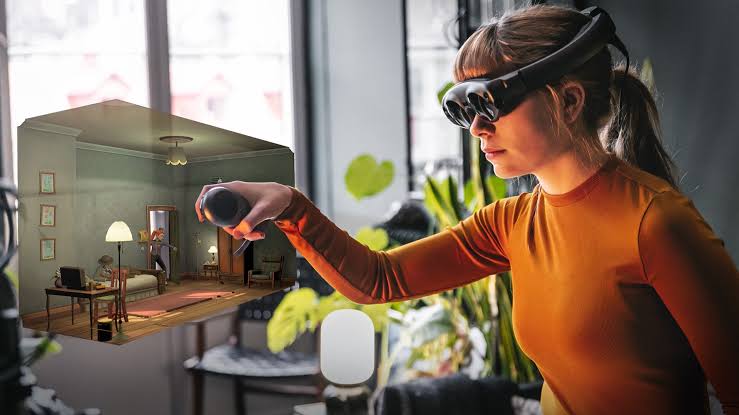Smartwatches have grown beyond being stylish accessories and now play an important role in health monitoring. With the rise of digital health and wearable technology, these devices have become powerful tools for tracking wellness, fitness, and even detecting medical conditions. Modern smartwatch technology has advanced rapidly in recent years, providing more accurate data, deeper insights, and life-saving features that support both personal and clinical healthcare.
Evolution of Health Monitoring in Smartwatches
The earliest smartwatches offered only basic health tracking features such as step counting and calorie monitoring. Over time, they evolved into sophisticated devices capable of measuring heart rate, sleep patterns, and exercise performance. Today, they serve as mini health companions, integrating advanced sensors and artificial intelligence to monitor conditions in real-time.
Manufacturers have invested heavily in research to improve accuracy, ensure reliable results, and create features that can rival professional medical equipment in certain aspects. These advances have transformed how people manage their health daily.
Improved Heart Rate and ECG Monitoring
One of the biggest leaps in smartwatch health technology is advanced heart monitoring. Current models use optical sensors and electrodes to provide continuous heart rate monitoring. Some devices now feature electrocardiogram (ECG) functions that can detect irregular heart rhythms such as atrial fibrillation.
This is especially useful because many people may not realize they have heart conditions until symptoms worsen. Smartwatches give early warnings and allow users to seek medical attention before it becomes critical. These features are also valuable for athletes who need to track heart performance during training.
Blood Oxygen and Respiratory Tracking
The integration of blood oxygen monitoring (SpO2) has become a standard feature in many new smartwatches. This function is particularly important for people with respiratory conditions or those living in areas with high air pollution. During the pandemic, SpO2 sensors gained attention as a way to monitor oxygen levels and identify early signs of breathing problems.
Some smartwatches also include respiratory rate tracking, giving users insights into their lung health and breathing patterns. This is beneficial for people with asthma, sleep apnea, or other respiratory conditions.
Blood Pressure and Glucose Monitoring Progress
Although still developing, smartwatches are beginning to introduce non-invasive methods for monitoring blood pressure and even glucose levels. While traditional equipment is still more accurate, these features are advancing quickly and hold great promise for people managing hypertension or diabetes.
Blood pressure tracking allows users to keep an eye on fluctuations throughout the day rather than relying on occasional checks. Similarly, continuous glucose monitoring could become revolutionary for diabetic patients, reducing the need for constant finger-prick tests.
Sleep Tracking and Stress Management
Modern smartwatches have sophisticated sleep tracking capabilities that monitor sleep stages, including light, deep, and REM sleep. With this data, users can improve sleep habits, identify disruptions, and work toward better overall rest.
Stress monitoring has also become a growing feature. Smartwatches now use heart rate variability and other signals to measure stress levels and suggest relaxation techniques. Some models provide guided breathing exercises, helping users manage anxiety and maintain balance in their daily lives.
Integration with Fitness and Lifestyle
Beyond clinical monitoring, smartwatches support overall wellness through fitness tracking. Advanced GPS, movement sensors, and AI-driven insights provide accurate details about workouts, running performance, and calorie consumption. These tools motivate individuals to stay active and maintain a healthier lifestyle.
Many smartwatches now integrate nutrition apps, hydration reminders, and menstrual cycle tracking, giving a complete view of personal health management. The more personalized these devices become, the more they empower users to take control of their wellbeing.
AI and Predictive Health Insights
Artificial intelligence plays a major role in making smartwatches smarter. By analyzing collected data, AI can predict potential health risks and provide personalized recommendations. For instance, AI algorithms can detect irregular trends in heart rate or sleep and alert users before the condition worsens.
This predictive approach moves beyond simple monitoring to proactive healthcare, making smartwatches essential preventive tools. As AI continues to improve, health insights will become more accurate and tailored to each individual’s lifestyle and medical history.
Emergency and Safety Features
Safety features have become another strong aspect of smartwatch health technology. Many devices now include fall detection, which can automatically alert emergency contacts or services if the wearer experiences a hard fall. Some also have SOS alerts that allow users to call for help quickly.
These tools are particularly valuable for elderly users or individuals with health risks, giving families peace of mind and enhancing personal safety in emergencies.
The Role of Smartwatches in Healthcare Systems
Smartwatches are not only for personal use; they are also becoming part of larger healthcare systems. Medical professionals are beginning to use wearable data to track patient progress remotely. Telemedicine platforms integrate smartwatch data, enabling doctors to provide more personalized care.
This shift supports preventive healthcare and reduces the need for frequent hospital visits. It also allows patients to actively participate in their health management while giving doctors continuous access to valuable data.
Challenges and Future Potential
Despite their benefits, smartwatch health features still face challenges. Accuracy remains a concern, especially compared to clinical equipment. Privacy and data security are also major issues, as personal health data must be protected against misuse.
Looking ahead, the future of smartwatch health technology holds exciting possibilities. Improvements in non-invasive glucose monitoring, hydration tracking, and early disease detection are expected. As sensors become more advanced and AI gets smarter, smartwatches could evolve into reliable medical companions that play a central role in global healthcare.
Conclusion
Smartwatch technology has advanced rapidly in the field of health monitoring, transforming from basic fitness trackers into essential health tools. With features such as ECG monitoring, blood oxygen tracking, sleep analysis, and AI-driven predictions, these devices are helping people take charge of their health like never before.
As innovation continues, smartwatches are likely to become even more accurate, personalized, and integrated into medical systems. Their ability to provide continuous, real-time health insights makes them one of the most important technological tools for both personal wellness and the future of healthcare.



